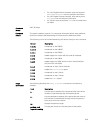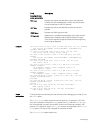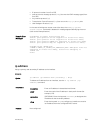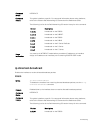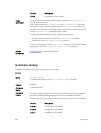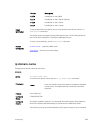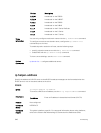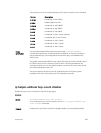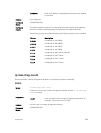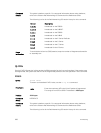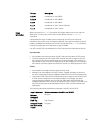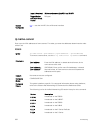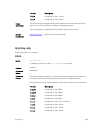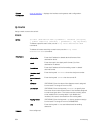The following is a list of the Dell Networking OS version history for this command.
Version Description
9.2(1.0) Introduced on the Z9500.
9.0.0.0 Added support for IPv6.
8.3.19.0 Introduced on the S4820T.
8.3.11.1 Introduced on the Z9000.
8.3.7.0 Introduced on the S4810.
8.1.1.0 Introduced on the E-Series ExaScale.
7.9.1.0 Introduced VRF on the E-Series.
7.6.1.0 Introduced on the S-Series.
7.5.1.0 Introduced on the C-Series.
6.2.1.1 Introduced on the E-Series.
Usage
Information
You can add multiple DHCP servers by entering the ip helper-address
command multiple times. If multiple servers are defined, an incoming request is
sent simultaneously to all configured servers and the reply is forwarded to the
DHCP client.
The system uses standard DHCP ports, that is UDP ports 67 (server) and 68 (client)
for DHCP relay services. It listens on port 67 and if it receives a broadcast, the
software converts it to unicast, and forwards to it to the DHCP-server with source
port=68 and destination port=67.
The server replies with source port=67, destination port=67 and the system
forwards to the client with source port=67, destination port=68.
ip helper-address hop-count disable
Disable the hop-count increment for the DHCP relay agent.
Z9500
Syntax
ip helper-address hop-count disable
To re-enable the hop-count increment, use the no ip helper-address hop-
count disable command.
Defaults Enabled; the hops field in the DHCP message header is incremented by default.
IPv4 Routing
947



